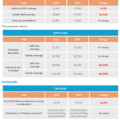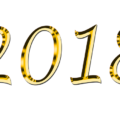
OVERVIEW
On March 7, 2019, the Department of Labor (DOL) issued a proposed rule that would change the salary thresholds for the “white collar” overtime exemptions under the Fair Labor Standards Act (FLSA). Under the proposal, the minimum salary level for executive, administrative and professional employees would increase from $455 to $679 per week ($35,308 per year). This is significantly lower than the $913 salary level set in the 2016 final rule (which never took effect due to an injunction).
The proposal would allow employers to use nondiscretionary bonuses and incentive payments (including commissions) that are paid annually or more frequently to satisfy up to 10 percent of the standard salary level. The minimum salary level for highly compensated employees would also increase from $100,000 to $147,414 per year (an increase from the 2016 final rule’s annual threshold of $134,004).
ACTION STEPS
These changes will not take effect until after a final rule is issued. Employers are not required to comply with the proposal, but should become familiar with it and begin identifying which employees may be affected.
Background
The FLSA requires virtually all employers in the United States to pay overtime wages to employees who work more than 40 hours in a workweek. Certain exemptions to the overtime payment requirements apply, including the “white collar” exemptions for executive, administrative or professional (EAP) employees and highly compensated employees (HCEs). In general, an employee may qualify for a white collar exemption if he or she satisfies all three of the following:
- The “salary basis test”—The employee must be paid a predetermined and fixed salary that is not subject to reduction because of variations in the quality or quantity of work performed.
- The “salary level test”—The employee’s salary amount must be at least as much as the standard salary level or the HCE salary level set by the DOL.
- The “duties test”—The employee must primarily perform EAP duties. If an employee’s total annual salary is at least as much as the HCE salary level, the employee may meet the duties test if he or she performs at least one of the duties of an exempt EAP employee.
The DOL set the currently enforced amounts for the salary level test in 2004. On May 23, 2016, the DOL issued a final rule that would have significantly increased both the standard and HCE salary levels, starting in December 2016. In addition, the 2016 final rule would have further increased those amounts through automatic adjustments every three years. On Nov. 22, 2016, however, a federal court ruled that the 2016 final rule was unenforceable. Therefore, the final rule never took effect, and the DOL has continued enforcing the 2004 salary levels.
New Proposed Rule
In the 2019 proposed rule, the DOL proposed to update both the minimum weekly standard salary level and the total annual compensation requirement for HCEs to reflect growth in wages and salaries. The DOL is also proposing revisions to the special salary levels for employees in the motion picture industry and certain U.S. territories. The DOL is not proposing any change to the duties test, despite speculation that it would do so.
The following are key provisions of the proposed rule:
- Increase the standard salary level to $679 per week (the equivalent of $35,308 annually for a full-year worker), up from the currently enforced level of $455 per week.
- Increase the total annual compensation requirement needed to exempt HCEs to $147,414 annually, up from the currently enforced level of $100,000 annually.
- Allow employers to use nondiscretionary bonuses and incentive payments (including commissions) to satisfy up to 10 percent of the standard salary level, provided that these payments are made on an annual or more frequent basis. The DOL also invited comments on whether the proposed 10 percent cap is appropriate, or if a higher or lower cap is preferable.
The proposed rule does not provide for any automatic adjustments to the salary thresholds. Instead, the DOL is asking for public comments on the proposed rule’s language for periodic review to update the salary threshold. Any future update would continue to require notice-and-comment rulemaking.
For more information on the proposed rule, see the DOL’s Notice of Proposed Rulemaking: Overtime Update, which includes a fact sheet and frequently asked questions.





